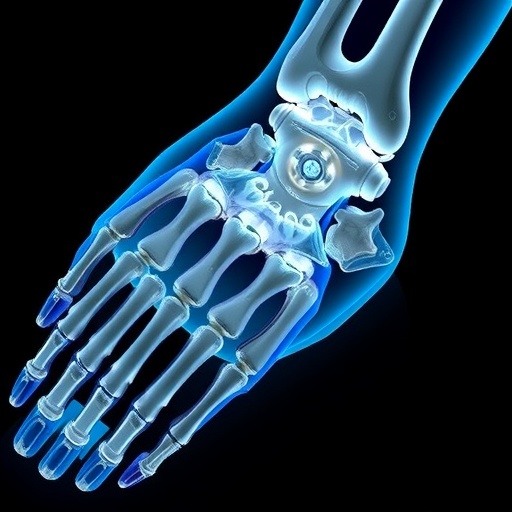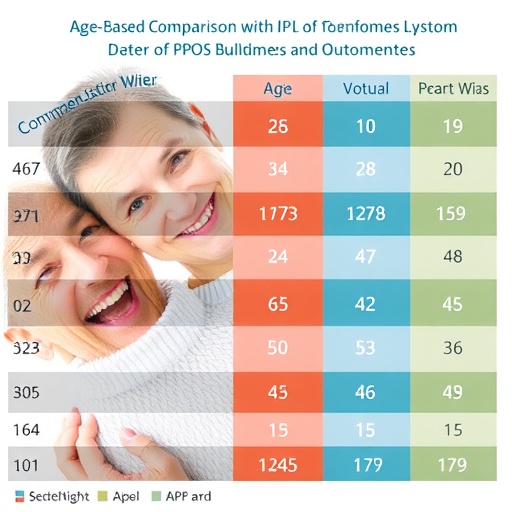In the evolving realm of orthopedic surgery, precision and accuracy during corrective procedures are paramount, particularly when addressing complex deformities of the upper limb. Recent advancements have steered the focus toward integrating three-dimensional (3D) digital technologies into preoperative planning and intraoperative execution. A comprehensive review published in BioMedical Engineering OnLine has evaluated innovative digital aids designed specifically to improve the planning and surgical treatment of upper limb osteotomies—a surgical intervention critical for correcting deformities caused by trauma, fractures, or degenerative processes.
Corrective osteotomy involves reshaping or repositioning bones to restore normal anatomical alignment, correcting angular malformations, and equalizing limb length discrepancies. Traditionally, surgeons have relied on two-dimensional imaging techniques such as plain radiographs and computed tomography (CT) scans, combined with their clinical expertise to devise surgical plans. However, the complexity of upper extremity anatomy and the variability of deformities challenge even the most skilled clinicians. This reality has catalyzed the development of digital preoperative planning platforms that employ 3D models reconstructed from patient-specific imaging data, allowing an immersive and interactive surgical roadmap.
The review highlights a particular 3D preoperative planning program that enables surgeons to virtually simulate osteotomies, manipulate bone fragments, and assess the spatial relationships between anatomical structures with remarkable accuracy. This technology offers an unprecedented ability to tailor surgical approaches to individual patient anatomy. Furthermore, an innovative image fusion system for intraoperative guidance has been introduced to bridge the gap between preoperative plans and real-time surgical execution. This system overlays the 3D plan onto live intraoperative imaging, providing surgeons with vital orientation cues and implant positioning guidance during the procedure.
Clinical scenarios involving various types of upper limb deformities, including malunions after fractures and congenital malformations, were examined to assess the practical benefits of these digital tools. Surgeons reported that the 3D planning allowed for better visualization of complex deformities, facilitated communication within the surgical team, and improved prediction of postoperative bone alignment. The image fusion system, by superimposing digital plans onto fluoroscopic images, reduced intraoperative guesswork, and helped in precise guidewire placement and implant fixation.
Despite these promising technological advancements, the comprehensive review uncovers a striking observation: the incorporation of these 3D digital aids has yet to translate into statistically significant improvements in patient-centric clinical outcomes when compared to conventional planning and surgical methods. Parameters such as functional scores, pain relief, range of motion, and complication rates showed no marked difference between the groups treated with traditional methods and those assisted by advanced digital systems. This paradox underscores the complex relationship between technological innovation and tangible clinical benefit.
One fundamental challenge identified by the authors is the current complexity and user interface limitations of these systems. While the technology allows extensive manipulation and visualization, the learning curve for surgeons remains steep. Time-intensive planning procedures and the increased intraoperative workflow required to integrate these tools can offset their theoretical advantages. Moreover, variability in surgeon experience with these digital platforms affects the consistency of their application, thereby diminishing the potential for standardized outcome improvements.
Another critical factor is system efficiency. The hardware and software integration necessary for seamless intraoperative guidance is often hindered by technical glitches, image registration errors, or delayed updates, which can interrupt surgical flow. Given that osteotomies are often performed under strict time constraints to minimize anesthesia duration and surgical risks, any procedural delays introduced by digital tools can adversely impact their practicality and acceptance.
The reviewed studies also emphasize the need for further enhancements in the automation and artificial intelligence components within these digital surgical aids. Algorithms capable of automatically identifying deformity parameters, suggesting optimal osteotomy planes, or dynamically adjusting intraoperative guidance based on real-time anatomical changes could revolutionize their utility. Incorporation of machine learning to analyze large datasets of surgical outcomes may enable personalized refinement of surgical plans with predictive analytics, further elevating the precision and customization of treatment protocols.
Integration of augmented reality (AR) and mixed reality (MR) technologies holds promise as future directions beyond the current image fusion methods. By embedding holographic overlays directly into the surgeon’s field of view using smart glasses or head-mounted displays, AR systems could enable intuitive real-time navigation without diverting attention from the surgical site. The authors anticipate that such innovations, combined with improved user-friendly interfaces and faster processing capabilities, could overcome existing impediments.
Furthermore, enhanced surgeon training and simulation platforms utilizing these 3D planning systems prior to actual surgeries may reduce the learning curve and help embed digital workflows into routine practice. Virtual reality modules can serve as rehearsal environments, allowing surgeons to gain familiarity with patient-specific anatomy and osteotomy nuances in a risk-free setting. This educational facet may enhance clinical confidence and eventually translate into better surgical precision and patient outcomes.
From a biomechanical perspective, these digital planning methods can optimize implant selection and positioning by simulating stresses and load distribution across osteotomized bone segments. This preemptive insight into mechanical performance potentially reduces hardware failure and nonunion rates. However, clinical validation of these biomechanical models requires further longitudinal studies.
While current clinical data may not demonstrate dramatic superiority in outcomes, the reviewed technologies undeniably represent a paradigm shift in how surgeons conceptualize, plan, and perform complex upper limb osteotomies. They provide a platform for precision medicine by harnessing patient-specific anatomical data to inform surgical decision-making in ways previously unattainable with conventional imaging and manual techniques.
In conclusion, this critical assessment of novel digital tools in upper limb osteotomy underscores both the promise and the limitations of current technologies. To leverage their full potential, ongoing innovation must focus on improving system efficiency, enhancing user interfaces, integrating intelligent automation, and expanding surgeon training modalities. Only through iterative refinement and rigorous clinical validation can these methods transition from intriguing technological adjuncts to indispensable components of orthopedic surgical practice, ultimately elevating patient care standards.
—
Subject of Research:
Article Title: A review of novel methods to assist digital planning and execution of osteotomy for upper limb deformities.
Article References: Yuichi, Y., Kohyama, S., Ikumi, A. et al. A review of novel methods to assist digital planning and execution of osteotomy for upper limb deformities. BioMed Eng OnLine 24, 2 (2025). https://doi.org/10.1186/s12938-025-01332-5
Image Credits: AI Generated
DOI: https://doi.org/10.1186/s12938-025-01332-5
Tags: 3D preoperative planninganatomical alignment restorationcomplex upper extremity anatomycorrecting bone deformitiesdigital aids in surgerydigital techniques in orthopedic surgeryimmersive surgical roadmapsinnovative surgical technologiesorthopedic surgery advancementspatient-specific imaging dataupper limb osteotomyvirtual simulation of osteotomies





